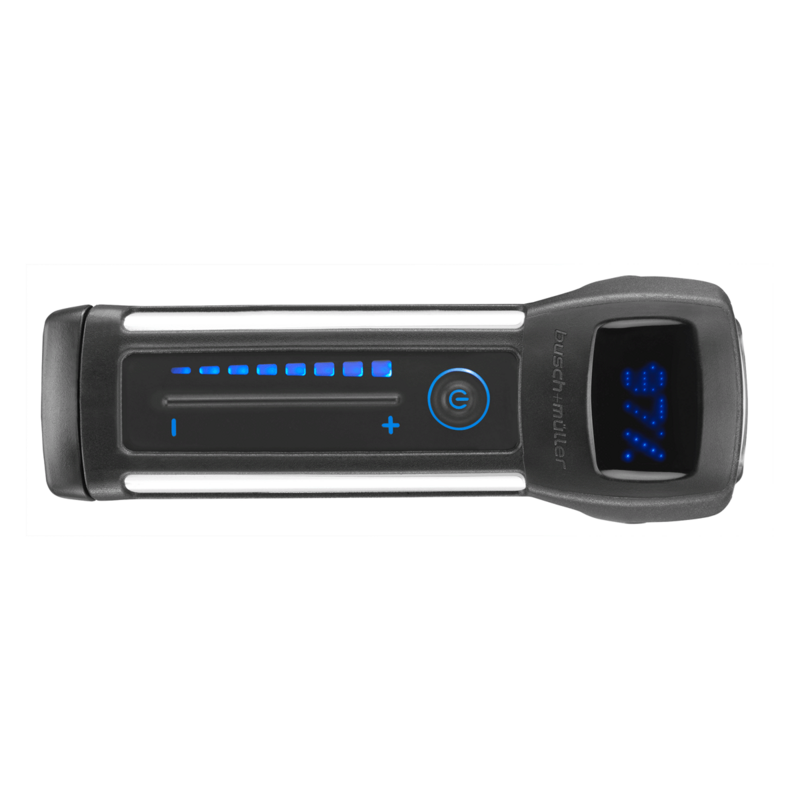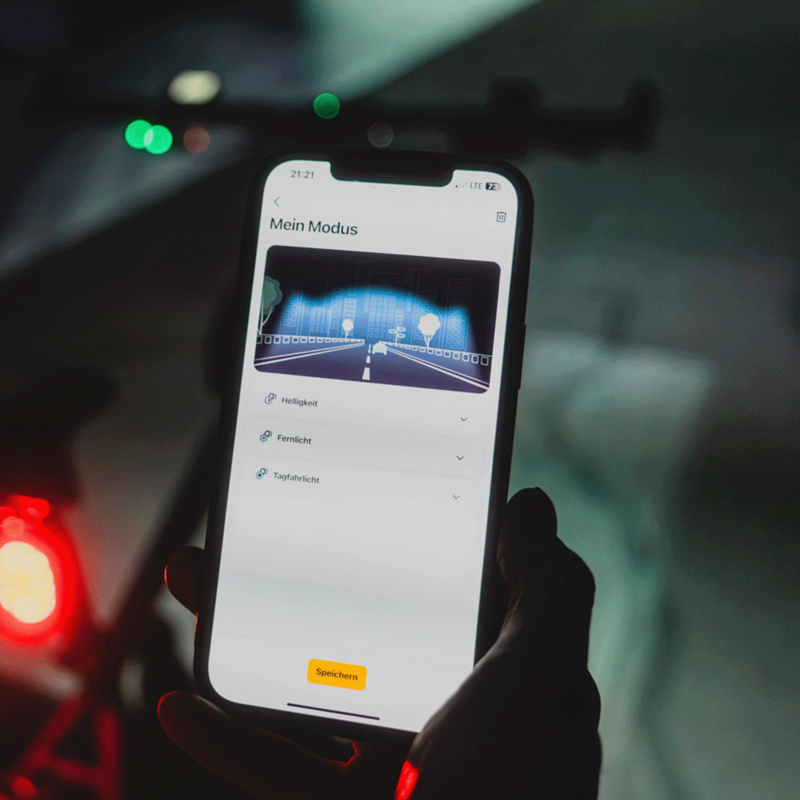Bicycle front light with rechargeable battery
Your handy companion for all occasions
Filter products
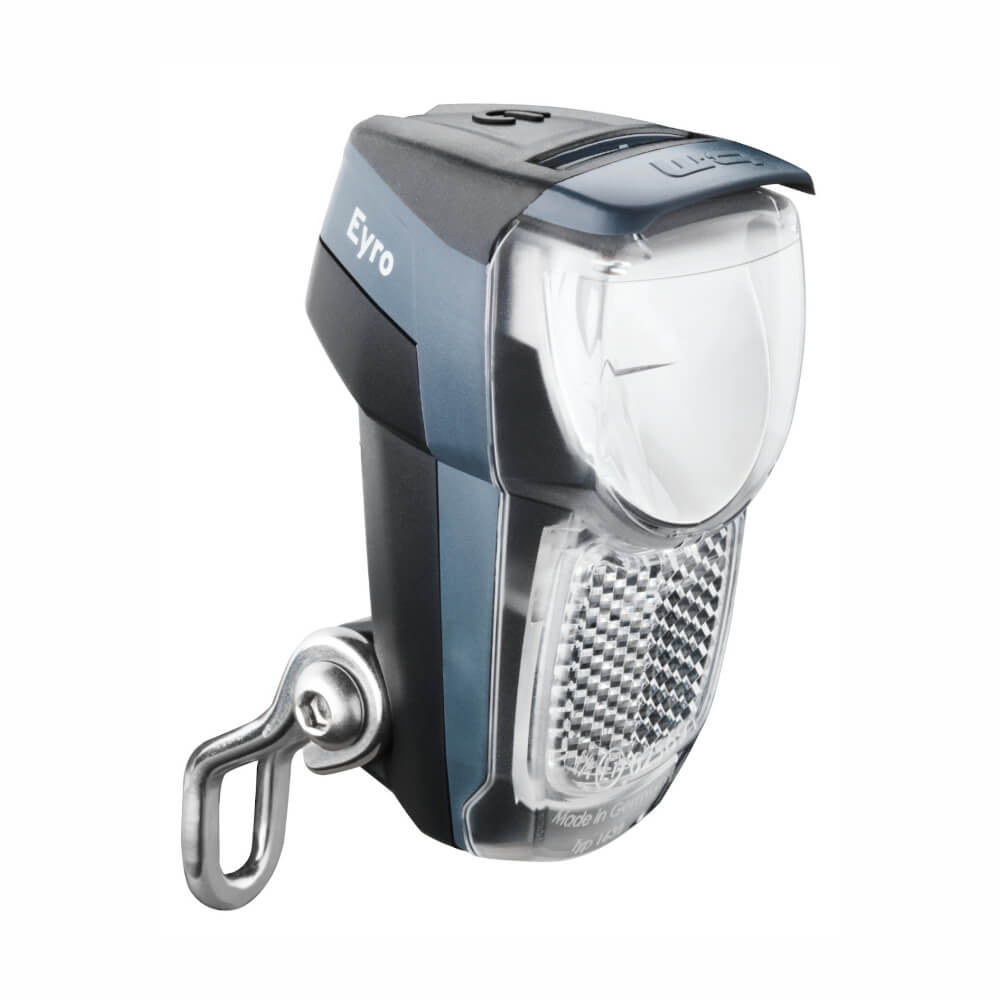

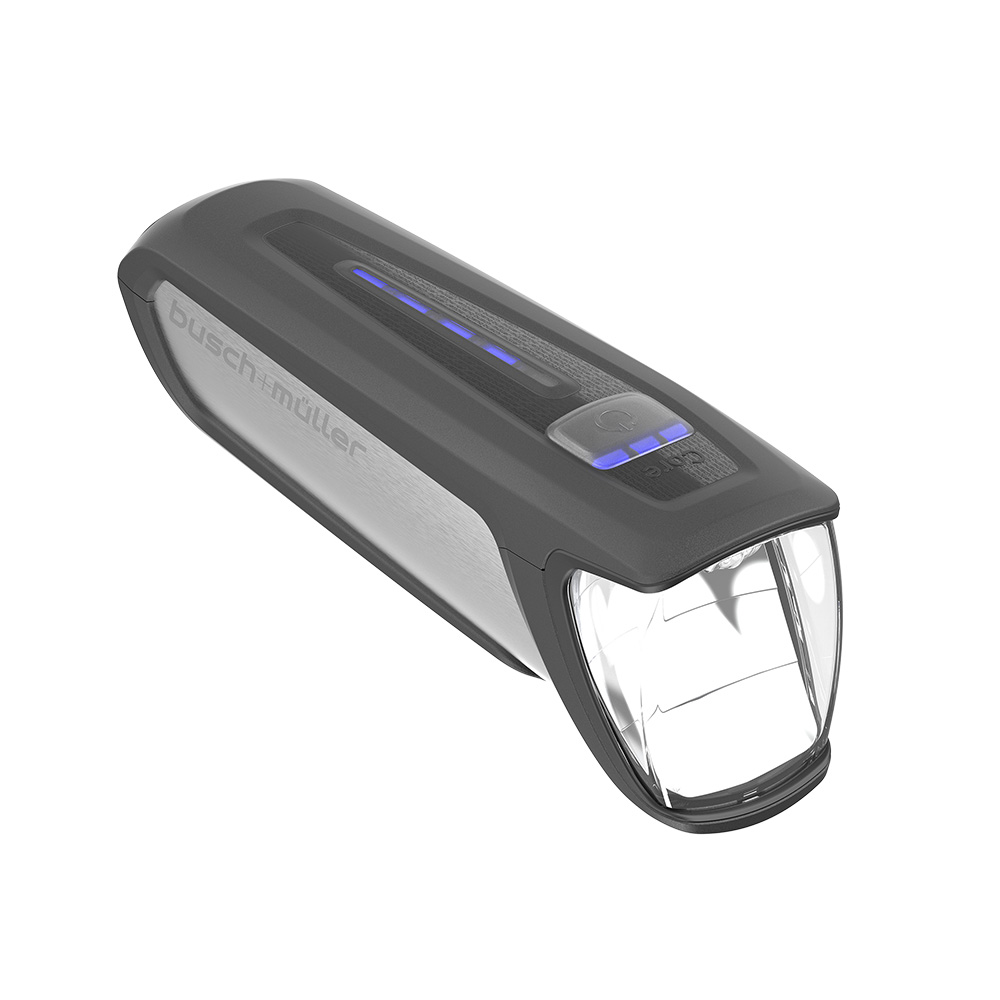

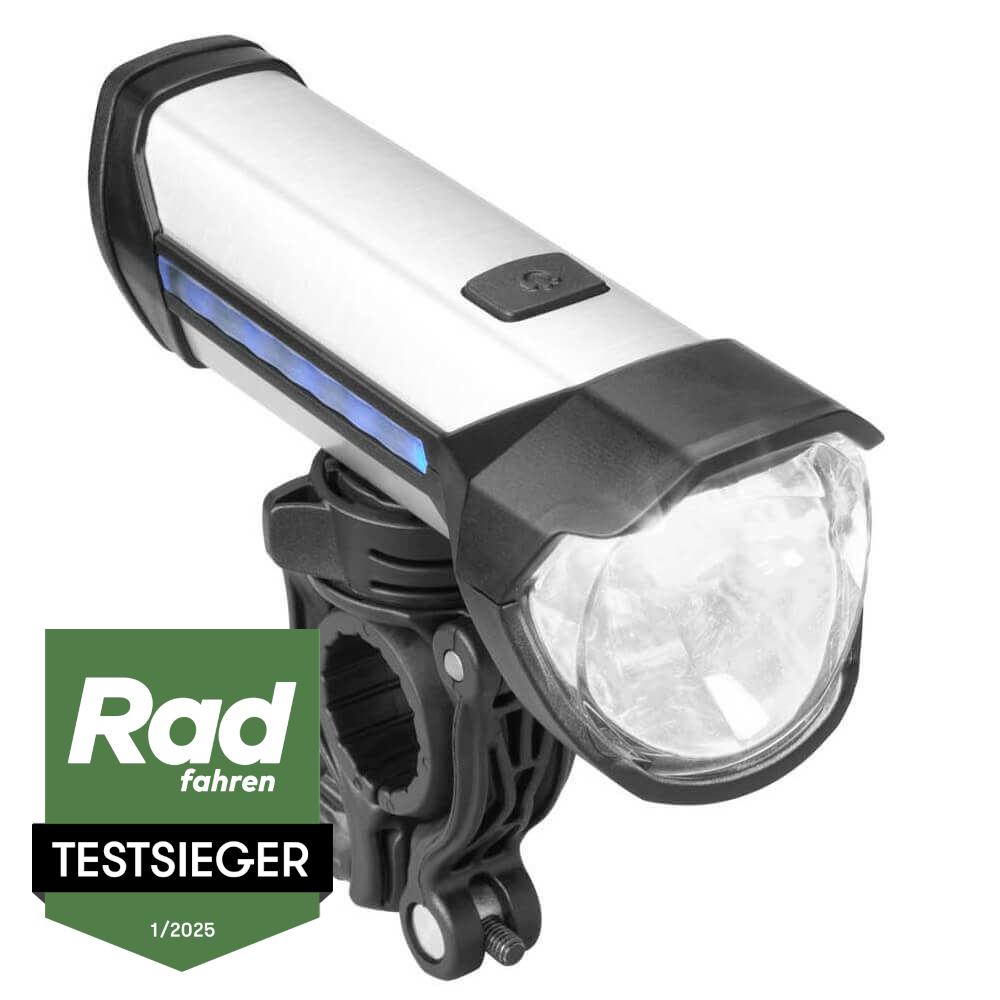
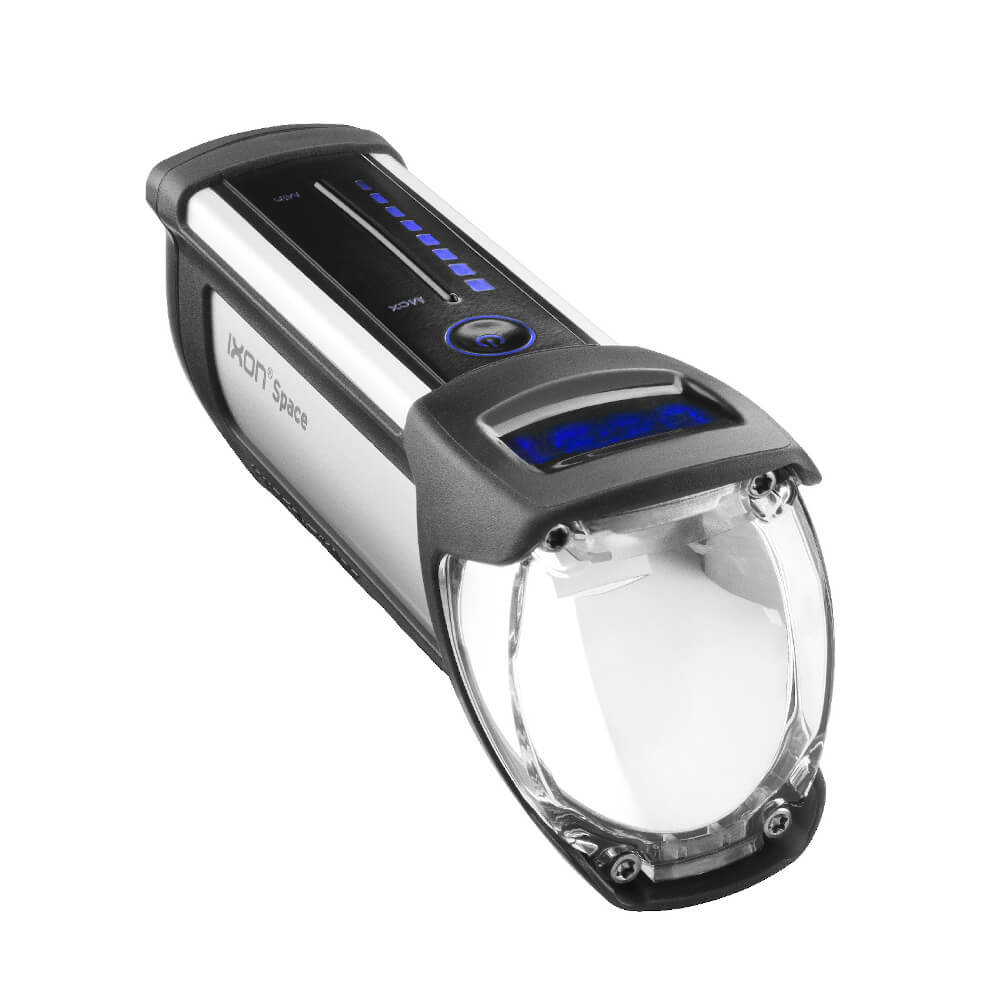
Table of contents
Rechargeable front light: All the advantages and information on flexible bike lighting On and off: the advantages of battery-powered front lighting Always neat and tidy: the regulations for bike lights with rechargeable batteries Tips from the experts: What you should look out for when buying a rechargeable front lightRechargeable front light: All the advantages and information on flexible bike lighting
If you are looking for a flexible companion for your bike that will light your way in any situation, then a rechargeable front light is the right choice for you. To help you choose the ideal battery-powered front light, we have summarised our expert knowledge for you. Find out here,
- the advantages of battery-powered bike lights,
- which regulations you should observe,
- the special features of rechargeable front lights and
what you should look out for when buying a rechargeable front light.

On and off: the advantages of battery-powered front lighting
Battery-powered bike lights are versatile and flexible. They are particularly suitable if you want to go as fast as possible on your road bike or off-road on your mountain bike.
This is due to the following features:
- Small and light (fit in a jacket pocket or handbag)
- Quick and easy to mount without tools
- Can be flexibly attached to different bikes if required
- Do not require a power source on the bike - convenient charging via USB
- Can also be used as a power bank depending on the equipment (e.g. our IXON Space)
- Easy to replace if damaged
- Uniform light intensity (a little tip for particularly high lighting quality: our IXON Core 2)
- Illuminance can usually be adjusted in stages
Always neat and tidy: the regulations for bike lights with rechargeable batteries
Proper battery lighting not only ensures safety in traffic, but also prevents a fine. This is because you will be fined if you are caught riding without lights. Our tip: It's better to invest the money in a suitable front light right from the start.
The following regulations are set out in Section 67 of the German Road Traffic Licensing Regulations (StVZO) for bicycle lights with a battery:
- Headlights must shine white and must not flash.
- Headlights must be set glare-free.
- A minimum illumination level of 10 lux is prescribed.
- Additional functions such as parking, high beam and daytime running lights are permitted.
- Bicycle lighting must be approved by the Federal Motor Transport Authority. The corresponding approval number is normally found on the housing and consists of a wavy line, the letter K and a number.
It goes without saying that all our rechargeable front lights are approved for use in road traffic and fulfil the legal requirements - so that you are always on the road in accordance with the regulations.
Very important: the special features of battery lighting
Due to their design, rechargeable front lights for bikes have some special features that you should consider when choosing your bike lights:
Headlamp levelling
If set incorrectly, LED lights can dazzle oncoming traffic and thus become a safety risk. This is why bike front lights usually have the option of adjusting the position of the light cone automatically or manually - for maximum safety.
Adjustable light intensity
Most battery-powered lights can be dimmed or adjusted upwards. This allows you to adjust the brightness to the prevailing light conditions.
Lighting duration
It's clear: where it says battery, the battery will run out at some point. Depending on the model and lighting level used, the lighting time ranges from a few hours to a day or even longer.
Types of charging
Many rechargeable lamps require a special charging cable for charging. This is usually included in the scope of delivery - but we make it even easier for you: our rechargeable lights can be easily charged using a USB cable.
Tips from the experts: What you should look out for when buying a rechargeable front light
If you want to find the perfect light for your bike, you should consider the following points when making your choice:
Battery life
Of course, the longer the battery life, the better - especially if you are riding longer distances in the dark. However, if you usually only ride to the bakery around the corner, a smaller battery will suffice.
Luminosity
The same rule applies here: the higher the luminosity, the better. However, before you reach for a high-end model with 150 lux, you should ask yourself whether this makes sense for your purposes. In the city, for example, 40 lux is enough, whereas in the countryside, 100 lux or more is fine.
Mounting
Battery-powered bike lights are usually installed on the handlebars. When choosing, look for a simple mounting system that allows you to install and remove your light without tools and in as few steps as possible.
Waterproofness
Cyclists are often out and about in bad weather. That's why you should make sure that your bike light has at least IPX4 protection class and is therefore protected against splashing water and rain. For example, our "Cycling" test winner IXON Rock.

